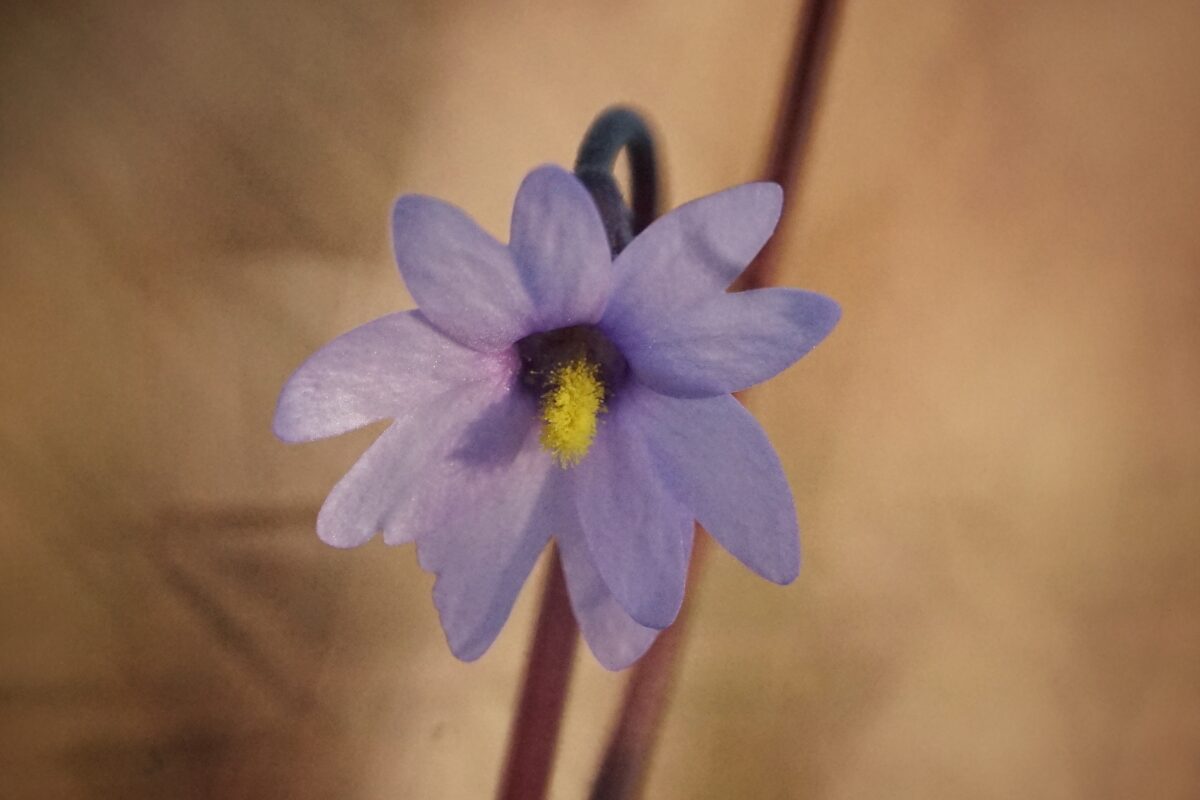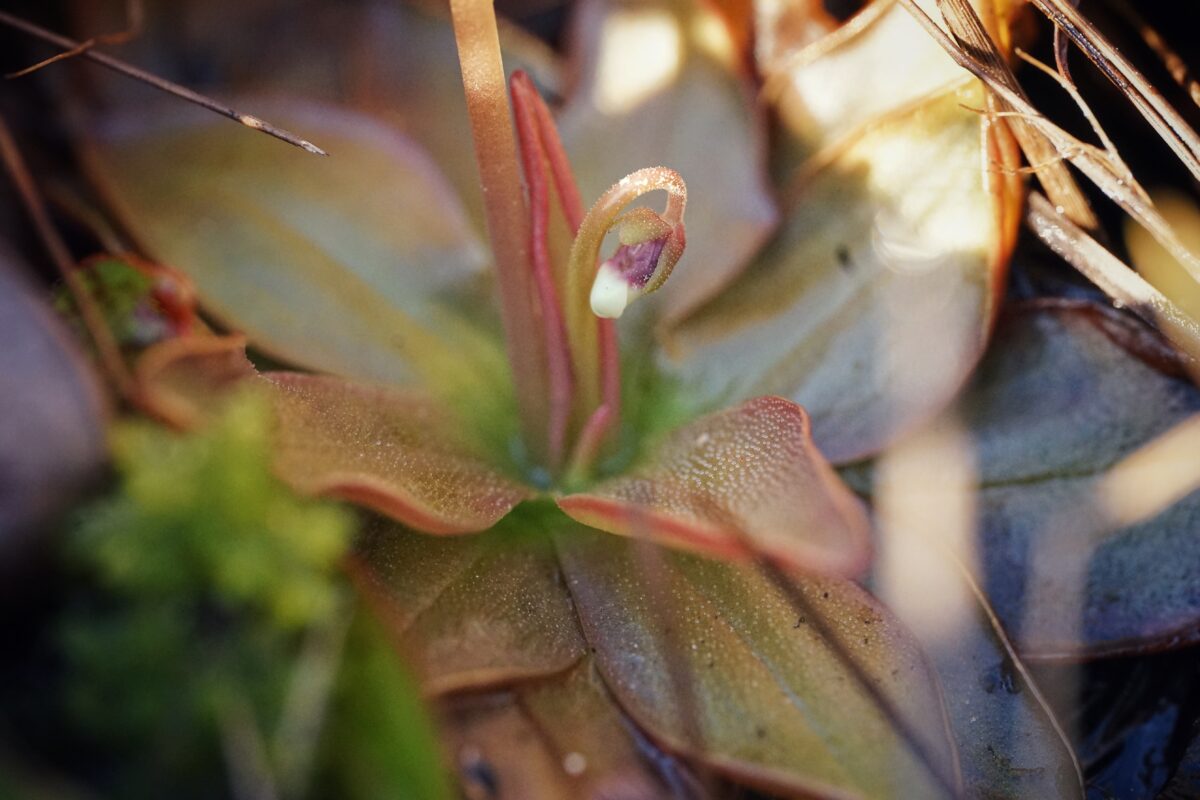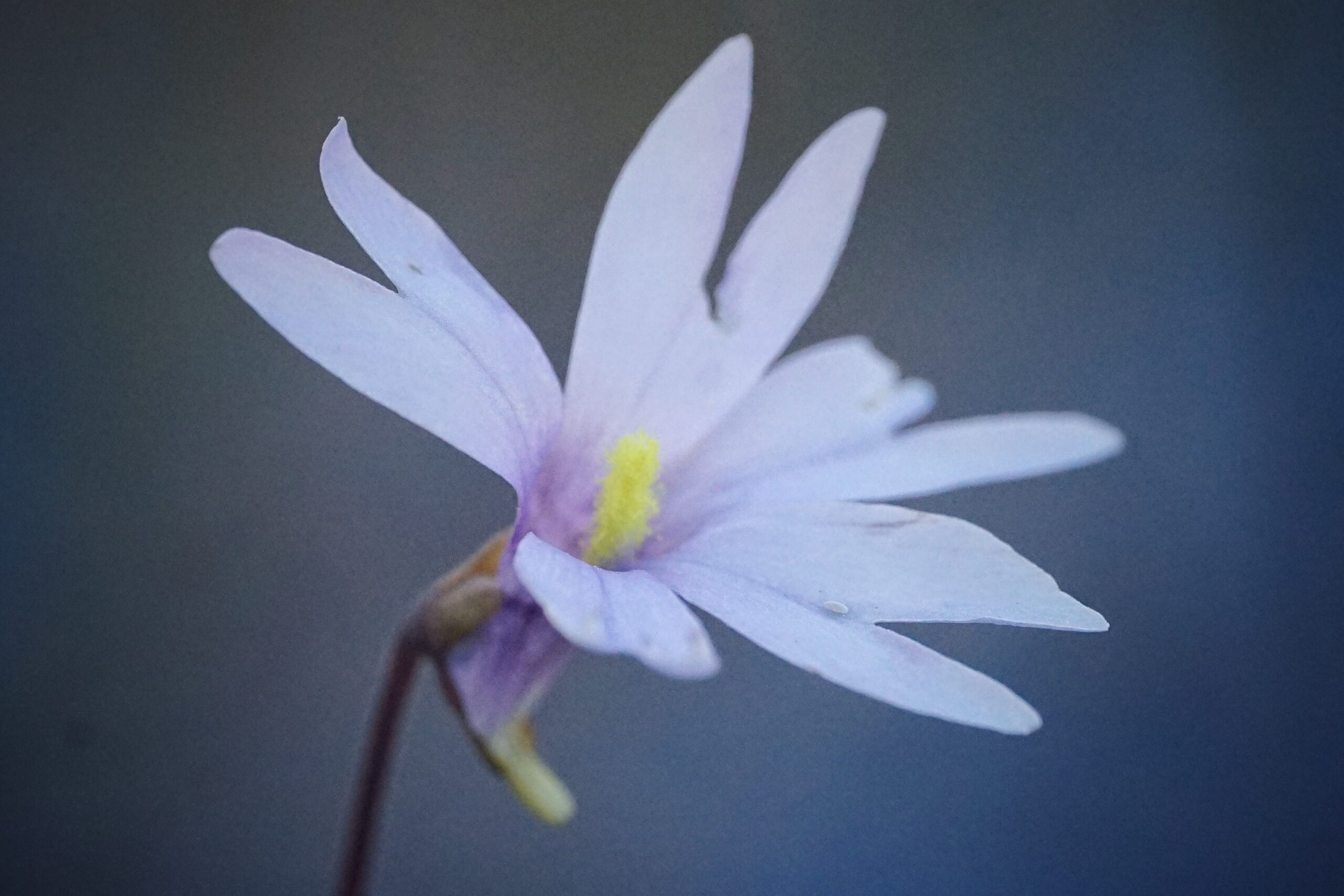Chapman’s butterwort
Pictured above: Chapman’s butterwort (Pinguicula planifolia) by Emily Bell. Click on terms for botanical definitions. View post as a PDF.
Chapman’s butterwort (Pinguicula planifolia) is an insectivorous wildflower that blooms from January through April. It is endemic to a small region of the Southeastern Coastal Plain from the Florida Panhandle into southern Alabama and Mississippi. It occurs in wet habitats from bogs, cypress domes, depressions in wet flatwoods and prairies to roadside ditches. The plant is a state-threatened species and is susceptible to drought conditions, drainage, habitat loss and illegal collection.
Chapman’s butterwort blooms are light purplish to pinkish to almost white with notched petals and a darker purple tubular throat. Flowers are solitary and born on erect leafless scapes that arise from basal rosettes of succulent reddish to reddish-green leaves. Leaf margins are entire and involute. The scape, sepals and leaves are covered in tiny hairs. The hairs on the leaf surface secrete a sticky mucilage in which insects become trapped. (Insects often mistake the mucilage for drops of water.) Enzymes are then secreted to help the plant digest the insects. The ability to trap and digest insects allows Chapman’s butterwort (like most insectivorous plants) to survive in nutrient-deficient conditions. Subsequently, it helps prevent insect predation.


The genus name, Pinguicula, comes from the Latin pinguis, which means “fat” and alludes to the greasy feeling of the leaf surface. The species epithet, planifolia, comes for the Latin planus meaning “flat” and folius meaning “leaf.”
Family: Lentibulariaceae (Bladderwort family)
Native range: The panhandle from Escambia to Wakulla County
To see where natural populations of Chapman’s butterwort have been vouchered, visit florida.plantatlas.usf.edu
Hardiness: Zones 8B–8A
Lifespan: Perennial
Soil: Moist to inundated, acidic soils with poor nutrients
Exposure: Full sun
Growth habit: Up to 10 inches tall
Propagation: Seed
Chapman’s butterwort is not commercially available. Visit a natural area to see it.
For information on other Pinguicula species, see:

